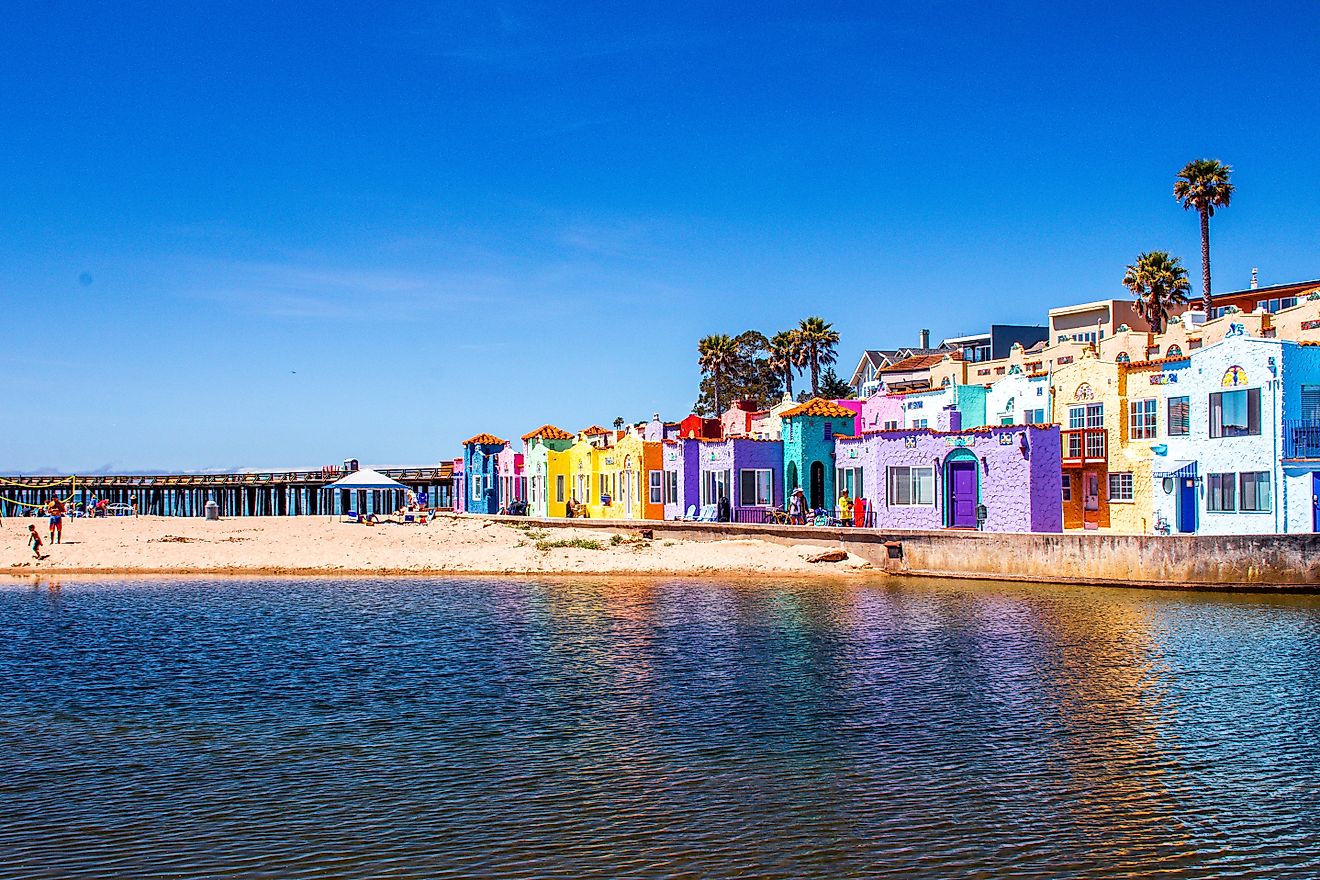UNESCO World Heritage Sites In Israel

The country of Israel is located in Western Asia in the region known as the Middle East, bordering along the eastern edge of the Mediterranean Sea. The country is an ancient land with its history going back to ancient times and the land is seen as the Holy Land to the three major western religions of Christianity, Islam and Judaism. Israel today has nine United Nations Educational, Scientific and Cultural Organization (UNESCO) World Heritage Sites, all of which have been designated since the beginning of the 21st Century.
Masada
The ruins of the fortress of Masada were designated as a UNESCO World Heritage Site in 2001, and are located in the Southern District of Israel near the Dead Sea. The site at Masada was built as a palace complex and refugee at some point during the reign of King Herod the Great (74/73-4 BC) when he was ruler of the Herodian Kingdom of Judea (37-4 BC), a client state of Rome. At the start of the First Jewish-Roman War (66-73 AD) in 66 AD a group of Jewish extremists called the Sicarii overpowered the Roman garrison stationed at Masada and took it for themselves as a base. Over the course of the war more Sicarii and their families came to Masada, where the war eventually reached its final moment with the Siege of Masada (73-74 AD) by the Romans. This long siege by the Romans finally ended with the mass suicide of the Sicarii rebels and there families, as they chose death rather than slavery once the Romans finally broke through Masada's defenses. Later the Byzantine's set up a small church at the site over the fifth and six centuries before it was abandoned, leaving Masada to be forgotten until it was discovered in 1828. Today the ruins of Masada stands as a symbol of Israel's ancient kingdom and how it met its violent end. For archaeologists it is a chance to study an outstanding palace from the era and one of the most complete examples of Roman siege works in the world.
Acre Old City
The Old City of Acre was designated as a UNESCO World Heritage Site in 2001, and it is located in the Northern District of Israel sitting along the coast of the Mediterranean Sea. The oldest known remains of a farming settlement at Acre dates to between 3500 BC and 3050 BC, which was abandoned after a few centuries. Acre was then resettled at some point between 2000 BC and 1500 BC and is one of the oldest continuously inhabited places on Earth. Acre had been under the control of the Canannites, and then Israelites before the Greeks conquered the city under Alexander the Great (356-323) in 332 BC. Following this the city was then under Greek, Roman or Byzantine control until 636 AD when it was conquered by the Arabic Rashidun Caliphate (632-661). Acre is most well known for its role in the crusades, where it was recaptured in 1104 by the Kingdom of Jerusalem (1099-1291) who held the city until it was retaken in 1187 by the Ayyubid Sultanate (1171-1260). The city was shortly retaken back by the Kingdom of Jerusalem in 1191, who held it until the Mamluk Sultanate (1250-1517) captured it in 1291. In 1517, the Ottoman Empire (1299-1923) took control of the city until 1918 when the British took possession of it during World War 1. Following this it was a part of the British Mandate of Palestine (1920-1948), until the Israel's captured the city in 1948 during the 1948 Palestine War (1947-1949). Today, Acre stands as an important historic town for archaeologists who mostly study the remains of the Crusader era buildings in the city or areas that are from the period of the Ottoman Empire.
Bet She’arim Necropolis
The Bet She’arim Necropolis was designated as a UNESCO World Heritage Site in 2015, and it is located in the Haifa District of Israel. The Bet She’arim Necropolis was built in the 2nd Century AD as the major burial location for Jews outside of Jerusalem following the Bar Kokhba revolt (132-136 AD) against the Roman Empire (27 BC-476 AD). Inside the catacombs is a treasure trove of artworks and iconographic motifs from ancient Judaism, as well as inscriptions in several different language like Hebrew, Greek, Aramic and Palmyrene. The site is also heavily associated with Rabbi Judah the Patriarch (135-217 AD), who helped to develop the site and was the leader who helped spur the Jewish renewal following the failed revolt. The site is important today as it shows the influence of classical Roman art, cross-cultural interactions and Jewish culture and religion from the period.
Significance of Israel's World Heritage Sites
There are a few reasons that Israel's UNESCO World Heritage Sites are important for both the country and the world as a whole. Obviously, these site help the economy since tourists, archaeologists, amateur historians and other all flock to these sites but they have greater value then the money they can bring it. These sites show a window to the past of the area, the people and the cultures that have moved in and out of Israel for thousands of years. They show how despite having come and gone these past people, events and culture still have an open window that once can look through to experience a glimpse of the past and what was.
UNESCO World Heritage Sites In Israel
| UNESCO World Heritage Sites In Israel | Year of Inscription; Type |
| Acre Old City | 2001; Cultural |
| Bahá’i Holy Places in Haifa and Western Galilee | 2008; Cultural |
| Bet She’arim Necropolis - A Landmark of Jewish Renewal | 2015; Cultural |
| Biblical Tels of Megiddo, Hazor, and Beer Sheba | 2005; Cultural |
| Maresha and Bet-Guvrin Caves in the Judean Lowlands | 2014; Cultural |
| Masada | 2001; Cultural |
| Mount Carmel Human Evolution Sites - Nahal Me’arot and Wadi el-Mughara Caves | 2012; Cultural |
| Negev Desert Cities and Incense Route | 2005; Cultural |
| Tel-Aviv's White City and Modern Movement Architecture | 2003; Cultural |











